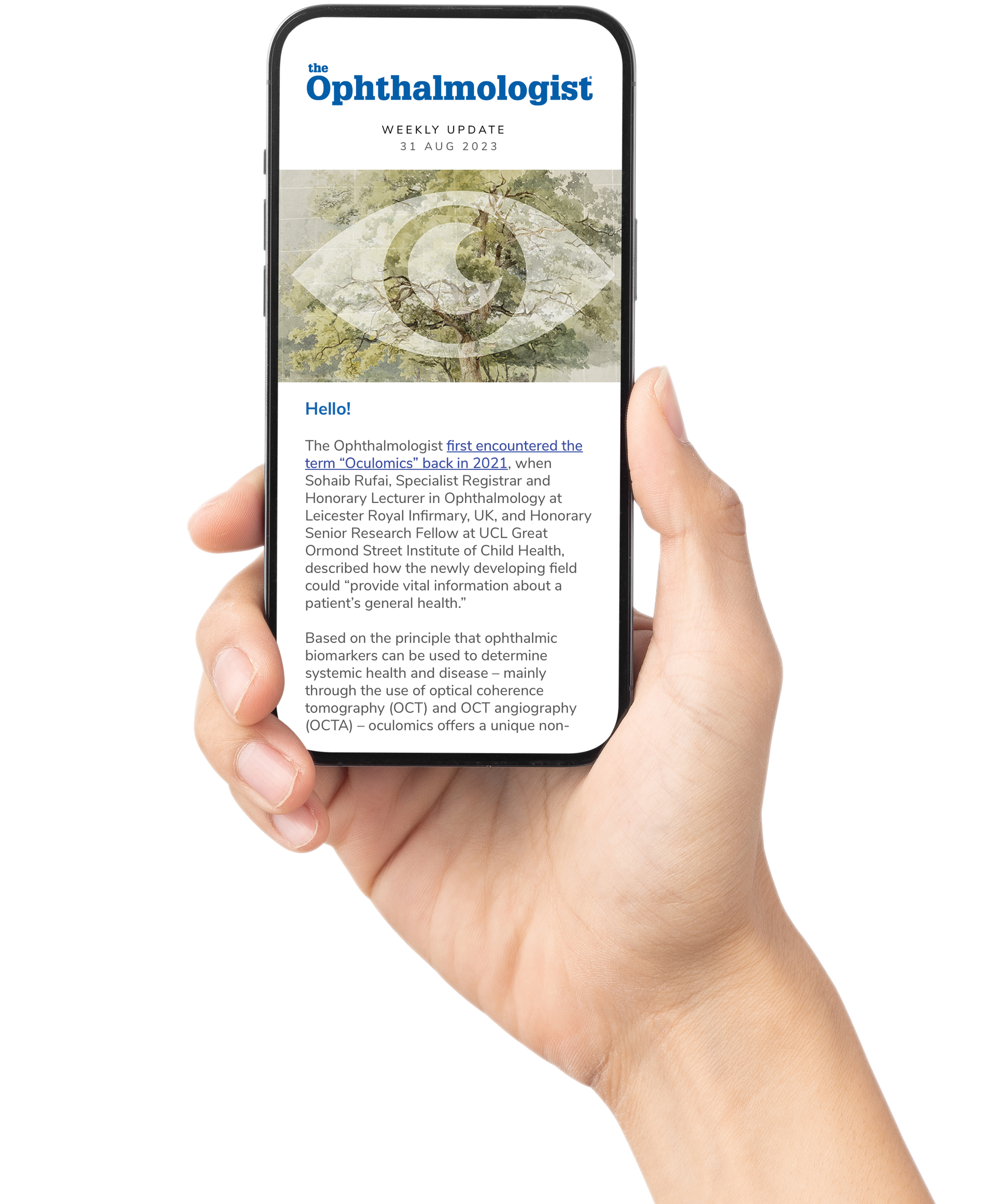Artificial intelligence (AI) can accurately predict which keratoconus patients are likely to need treatment to stabilize their corneas and prevent vision loss, according to research presented at the 43rd Congress of the European Society of Cataract and Refractive Surgeons (ESCRS), Copenhagen, Denmark.
Keratoconus, which affects up to 1 in 350 people, typically begins in adolescence or early adulthood. The cornea progressively thins and bulges, leading to visual impairment and, in severe cases, corneal transplantation. While minimally invasive “cross-linking” can halt progression in more than 95% of cases if performed early enough, surgeons can currently not predict which patients will deteriorate and which will remain stable with only further monitoring needed.
A UK-based team from Moorfields Eye Hospital NHS Foundation Trust and University College London analyzed 36,673 OCT scans from 6,684 patients. Their AI algorithm was able to predict disease progression from images taken from the first visit alone, dividing patients into low-risk (two-thirds) and high-risk (one-third) groups. Incorporating data from a second visit improved accuracy further, allowing up to 90% of patients to be correctly categorized.
“Our research shows that we can use AI to predict which patients need treatment and which can continue with monitoring,” comments co-author of the study, Shafi Balal. “This is the first study of its kind to obtain this level of accuracy in predicting the risk of keratoconus progression from a combination of scans and patient data, and it uses a large cohort of patients monitored over two years or more. The effective sorting of patients by the algorithm will allow specialists to be redirected to areas with the greatest need.”
The implications are twofold: high-risk patients could receive preventive cross-linking before the disease progresses further, while low-risk patients could avoid unnecessary years of frequent follow-up, easing the burden on healthcare systems.
Commenting independently, José Luis Güell, Head of the Cornea, Cataract and Refractive Surgery Department at the Instituto de Microcirugía Ocular, Barcelona, Spain, and ESCRS Trustee, says: “This research suggests that we can use AI to help predict who will progress, even from their first routine consultation, meaning we could treat patients early before progression and secondary changes. Equally, we could reduce unnecessary monitoring of patients whose condition is stable. If it consistently demonstrates its effectiveness, this technology would ultimately prevent vision loss and more difficult management strategies in young, working-age patients.”
The team is now developing more powerful algorithms trained on millions of scans, with the potential to extend applications beyond keratoconus to detecting eye infections and inherited corneal disorders.
Source: ESCRS Congress 2025.
